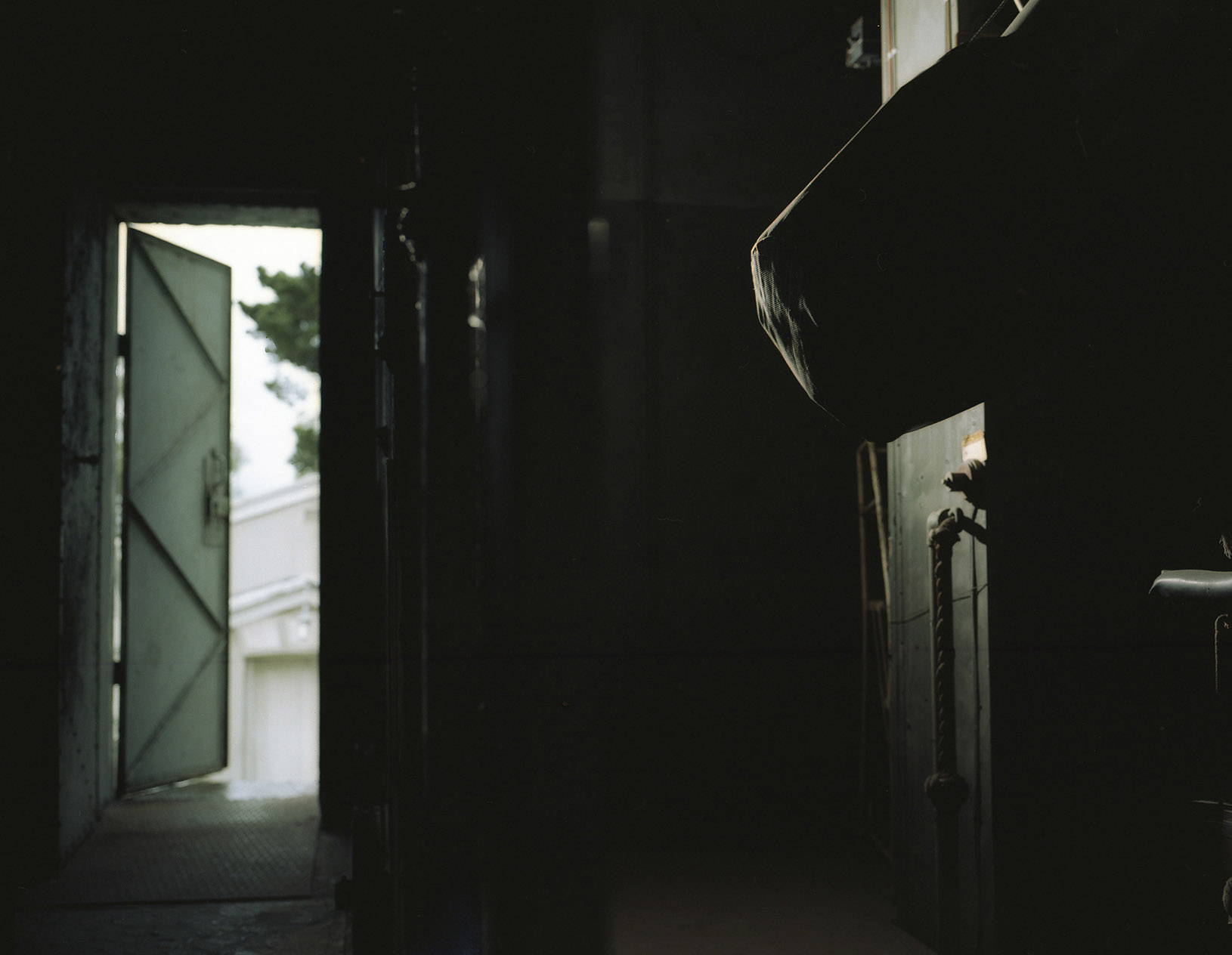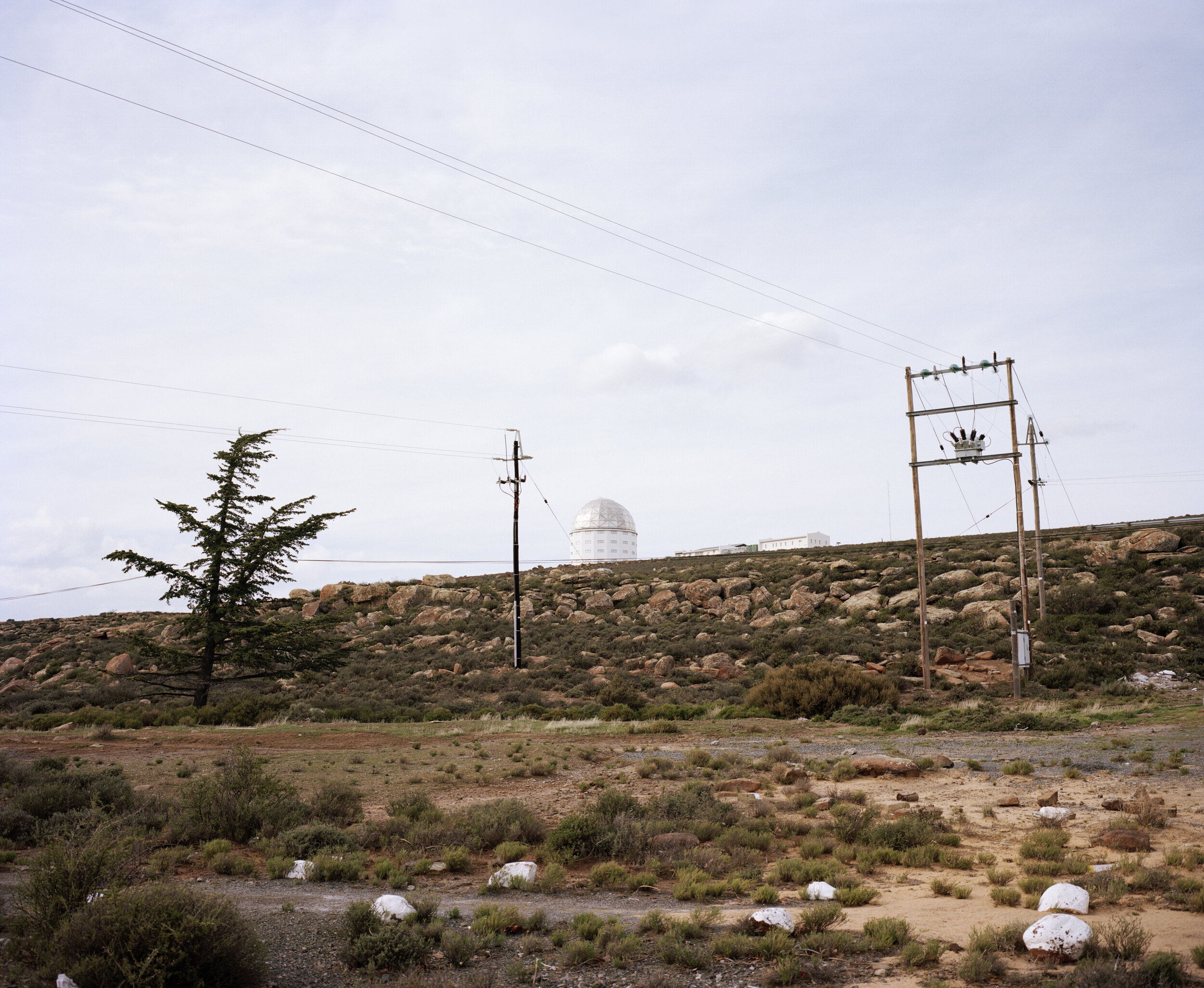This building houses the Gill Reversible Transit Circle, built in 1905 to measure the position of stars as they pass the north-south meridian and to check the accuracy of clocks. It was also used to contribute to the Catalogue of Fundamental Stars (Fundamental Katalog FK4), and was in use until around 1980 - after which the use of space satellites became the norm in the 1990s. The building is in need of repair and apparently one of its chimneys is housing a bee hive.
Read MoreREVERSIBLE TRANSIT CIRCLE TELESCOPE # 2, SAAO, OBSERVATORY, CAPE TOWN
SAAO OBSERVATORY # 9, SUTHERLAND, NORTHERN CAPE
SAAO OBSERVATORY # 8, SUTHERLAND, NORTHERN CAPE
SAAO OBSERVATORY # 6, SUTHERLAND, NORTHERN CAPE
SAAO OBSERVATORY # 7, SUTHERLAND, NORTHERN CAPE
SAAO OBSERVATORY # 3, SUTHERLAND, NORTHERN CAPE
SAAO OBSERVATORY # 5, SUTHERLAND, NORTHERN CAPE
SAAO # 1, SUTHERLAND, NORTHERN CAPE
'With the 1.9m we were looking at the spectra itself. Like looking at a prism, we used diffraction gratings where you could shift the light and look at different parts of the colour spectrum - from there you can tell from what stars were made of and so forth. Just doing star gazing, especially if you look at Jupiter and Saturn, it blows your mind away. If you look at Jupiter it looks like a solar system on its own. The big mother planet with a few small moons around it, and from time to time you see one of the moons disappear. Then you look at Saturn with the nice rings around it, it looks like a sombrero - that is just unbelievable.'
Francois van Wyk, Night Assistant and service observer, South African Astronomical Observatory, Sutherland.
Read MorePERSONAL OBSERVATORY, CLANWILLIAM, NORTHERN CAPE
SAAO # 4, SUTHERLAND, NORTHERN CAPE, 2016
'With the 1.9m we were looking at the spectra itself. Like looking at a prism, we used diffraction gratings where you could shift the light and look at different parts of the color spectrum - from there you can tell from what stars were made of and so forth. Just doing star gazing, especially if you look at Jupiter and Saturn, it blows your mind away. If you look at Jupiter it looks like a solar system on its own. The big mother planet with a few small moons around it, and from time to time you see one of the moons disappear. Then you look at Saturn with the nice rings around it, it looks like a sombrero - that is just unbelievable. My first three years I was working with other people, as I was undergoing training. From there on most of the time I was on my own. Sometimes for 14 hours in winter, just with a CD player, my night lunch and my coffee. Then it is up to you to make all the decisions. You just got to make sure you stay awake and alert. Otherwise you can screw up big time. I did fall asleep, but the thing is, if you feel you are tired it is best to close the dome, switch everything off and sit and sleep. If you leave things on and you fall asleep then you are in trouble.’
Francois van Wyk, Night Assistant and service observer, South African Astronomical Observatory, Sutherland.
Read MoreSAAO # 2, SUTHERLAND, NORTHERN CAPE
'My first three years, I was working with other people as I was undergoing training. From there on, most of the time I was on my own. Sometimes for 14 hours in winter, just with a CD player, my night lunch and my coffee. Then it is up to you to make all the decisions. You have just got to make sure you stay awake and alert. Otherwise you can screw up big time. I did fall asleep, but the thing is, if you feel you are tired it is best to close the dome, switch everything off and sit and sleep. If you leave things on and you fall asleep then you are in trouble.’
Francois van Wyk, Night Assistant and service observer, South African Astronomical Observatory, Sutherland.
Read MoreASTROGRAPHIC TELESCOPE BUILDING 1890, SAAO, OBSERVATORY, CAPE TOWN
‘Of course I hope with peoples interest we could take tours to see it properly - we have some ideas in the future to have a kind of heritage trail around the place. A lot of interesting scientific discoveries were made there - the discovery of oxygen in stars for example. At the moment there is a more modern telescope mounted on the mount, but that is not used - I would like to put the old telescope back there and restore it to the original. It should be possible. It was moved about 20 years ago but it is still in the dome actually. Of course it is heavy - we’ll need some proper tackle and things to mount it.’
Ian Glass, Professor of astronomy
Read MoreSALT, SAAO, SUTHERLAND, NORTHERN CAPE
'My first three years, I was working with other people as I was undergoing training. From there on, most of the time I was on my own. Sometimes for 14 hours in winter, just with a CD player, my night lunch and my coffee. Then it is up to you to make all the decisions. You have just got to make sure you stay awake and alert. Otherwise you can screw up big time. I did fall asleep, but the thing is, if you feel you are tired it is best to close the dome, switch everything off and sit and sleep. If you leave things on and you fall asleep then you are in trouble.’
Francois van Wyk, Night Assistant and service observer, South African Astronomical Observatory, Sutherland.
SALT (Southern African Large Telescope) at the South African Astronomical Observatory, just outside Sutherland in the Northern Cape. It is one of the largest optical telescopes in the world - so powerful and sensitive that it could spot a candle flame on the moon.
REVERSIBLE TRANSIT CIRCLE TELESCOPE # 1, SAAO OBSERVATORY, CAPE TOWN
CEDERBERG ASTRONOMICAL OBSERVATORY # 3, CEDERBERG
CEDERBERG ASTRONOMICAL OBSERVATORY # 2, CEDERBERG
‘If you consider there are between 10 and 20 times as many galaxies outside ours as there are stars in our galaxy - and we have maybe 200 billion stars, so multiply that between 10 and 20 and that is the number of galaxies, and each of those may have 200 billion stars. So we are pretty insignificant. If you go and look at a piece of sand outside. That is how insignificant we are. We think we are important but we are not.’
Chris Forder, amateur telescope builder, Cederberg Astronomical Observatory partner.
Read MoreCEDERBERG ASTRONOMICAL OBSERVATORY # 1, CEDERBERG
‘Are we alone, I don’t know - the thing is, we will probably never know. If we find a civilization that can signal to us we’ve got to be able to signal to them. If they are a 100 light years away we are talking about a 100 years between every communication, and by then the other one may have died out or they may have not reached the communications technology or we may have blown ourselves up enough to have to start all over again. So we will probably not communicate with anyone out there - not in our lifetime. But there is probably someone. We are so proud that we call them aliens - we may be the aliens. Who knows.’
Chris Forder, amateur telescope builder, Cederberg Astronomical Observatory partner.
Read MoreBIG MOON # 2 (ASTROGRAPHIC TELESCOPE BUILDING 1890) SAAO OBSERVATORY, CAPE TOWN
This photograph was taken during the night of 14 November 2016, with the biggest supermoon since 1948. When a full moon takes place when the Moon is near its closest approach to Earth, it is called a Supermoon. The next super moon similar to this will only take place in 2034. Supermoons generally appear 14% bigger and 30% brighter than other full moons.
Read MoreBIG MOON # 1 (MC CLEAN TELESCOPE), SAAO, OBSERVATORY, CAPE TOWN
McClean telescope installed in 1897 at the South African Astronomical Observatory in Cape Town.
Read More


















